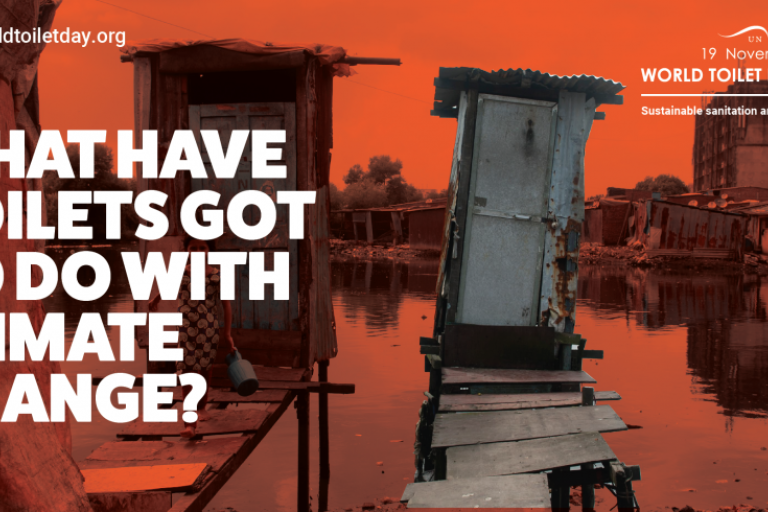World Toilet Day: Sustainable sanitation and climate change
World Toilet Day on 19 November is a United Nations Observance that raises awareness of the importance of safely managed sanitation and the fact that 4.2 billion people currently have no access to this.

World Toilet Day on 19 November is a United Nations Observance that raises awareness of the importance of safely managed sanitation and the fact that 4.2 billion people currently have no access to this.
WMO is part of the UN Water partnership organizing this year’s event, which emphasizes the need for action to tackle the global sanitation crisis and achieve Sustainable Development Goal 6: water and sanitation for all by 2030.
Climate and water both lie at the heart of the Sustainable Development Goals – the package of 17 crosscutting themes adopted by the international community in 2015. With just 10 years remaining until the 2030 target for achieving the goals, WMO is stepping up its efforts on the water targets.
“It is really worrying to see that Sustainable Development Goal 6, which focuses on clean water and sanitation, is so far off track now,” said WMO Secretary-General Prof. Petteri Taalas. “Especially against the background of the Coronavirus pandemic, it is alarming to recall that 3 billion people worldwide lack basic handwashing facilities. This is not acceptable in 21 century.”
Accessible, potable water is critical for human health and well-being and sustainable ecosystems. Thus, water shortages have the potential to lead to political and social unrest. More than 780 million people – about 11% of the world’s population – do not have access to clean, safe water. Even more worrisome is the estimate that about half of the world’s hospital beds are filled with people suffering from a water-related disease.
Water resources are under stress and increasing demand is adding further pressure, while climate change is increasing variability in the water cycle, inducing a greater number of extreme weather events, reducing the predictability of water availability and affecting water quality.
What have toilets got to do with climate change?
All around the world, billions of people also feel the impacts of climate change through water. The frequency of water-related disasters is on the rise due to the increase in the intensity of natural events such as storms, high winds, heavy precipitation and dry spells. Floods, droughts, landslides, glacier lake outbursts and storm surges are impacting lives and infrastructure in coastal zones and mountain tops, in arid plains and deserts, along river banks and in floodplains. The poorest and least developed are the most vulnerable.
The effects of climate change threaten sanitation systems – from toilets to septic tanks to treatment plants. For instance, floodwater can damage toilets and spread human waste into water supplies, food crops and people’s homes. These incidents, which are becoming more frequent as climate change worsens, cause public health emergencies and degrade the environment.
How do toilets protect our health?
4.2 billion people live without access to safely managed sanitation. Instead they often use unreliable, inadequate toilets or practise open defecation. Untreated human waste gets out into the environment and spreads deadly and chronic diseases. Sustainable sanitation systems, combined with the facilities and knowledge to practise good hygiene, are a strong defence against COVID-19 and future disease outbreaks.
How can toilets help fight climate change?
Globally, 80% of the wastewater generated by society flows back into the ecosystem without being treated or reused. Wastewater and sludge from toilets contain valuable water, nutrients and energy. Sustainable sanitation systems also make productive use of waste to safely boost agriculture and reduce and capture emissions for greener energy.
What does a sustainable sanitation system look like?
Sustainable sanitation begins with a toilet that effectively captures human waste in a safe, accessible and dignified setting. The waste then gets stored in a tank, which can be emptied later by a collection service, or transported away by pipework. The next stage is treatment and safe disposal. Safe reuse of human waste helps save water, reduces and captures greenhouse gas emissions for energy production, and can provide agriculture with a reliable source of water and nutrients.
More information is at https://www.worldtoiletday.info/








